In the early 1970s, a young Steve Jobs and Steve Wozniak were tinkering with electronics in a Silicon Valley garage. They had a vision of a personal computer that would be easy to use and accessible to everyone. This was a radical idea at a time when computers were large, expensive, and required specialized knowledge to operate.
Despite the odds, Jobs and Wozniak remained focused on their vision. They poured all their energy into designing and building the Apple I, and later the Apple II. They made strategic choices about which features to include and which to leave out, always with the end user in mind. Their unwavering commitment to simplicity and user-friendliness would go on to revolutionize the entire computer industry.
The story of Apple's early days illustrates the power of a focused, 80/20 strategy. By zeroing in on the few things that truly mattered to their customers, Jobs and Wozniak were able to create extraordinary value and build a company that would change the world.
In this article, we will explore how you can apply the same principles to craft a powerful 80/20 strategy for your own business. We will dive into the process of defining your core values, mission, and vision, setting 80/20 goals and objectives, conducting an 80/20 analysis of your business, and developing a strategic roadmap to guide your execution.
Whether you're just starting out or looking to take your business to the next level, the frameworks and techniques covered in this article will help you cut through the noise and focus on what really moves the needle.
PART 1
Defining Your Core Values, Mission, and Vision
The foundation of any great strategy is a clear sense of purpose and direction. It's about knowing who you are, what you stand for, and where you're headed. This clarity comes from defining your core values, mission, and vision.
Your core values are the fundamental beliefs and principles that guide your decisions and actions. They are the non-negotiable standards that you hold yourself and your team accountable to. When you're faced with a tough choice, your values help you determine the right path forward.
Some examples of core values include integrity, excellence, innovation, teamwork, and customer focus. The specific values that matter most will depend on your unique context and goals, but the key is to identify the ones that are truly essential to your identity and success.
One powerful exercise to identify your personal values is to reflect on your life experiences and the moments when you felt most fulfilled and aligned. Consider questions like:
• What are the qualities and characteristics that you most admire in others?
• What are the non-negotiable standards that you hold yourself to?
• When have you felt most proud of your actions and decisions?
Another approach is to imagine your own funeral and the eulogy that would be given. What would you want people to say about the impact you had and the values you embodied?
As you go through these exercises, look for common themes and patterns. Try to distill your reflections down to a core set of 3-5 values that resonate most deeply with you.
Once you have clarity on your personal values, the next step is to align them with your business. Ask yourself:
• How do my personal values translate into the context of my business?
• What values do I want my business to stand for and be known for?
• How will these values guide our decisions and actions as a company?
The goal is to define a set of core values that are authentic to who you are and that will serve as a compass for your business.
With your values in place, you can then craft a compelling mission statement.
A great mission statement should be clear, concise, and inspiring. It should answer the fundamental questions of what you do, who you serve, and the value you provide. Some classic examples include:
• Google: To organize the world's information and make it universally accessible and useful.
• Patagonia: We're in business to save our home planet.
• LinkedIn: To connect the world's professionals to make them more productive and successful.
Then, work to distill your answers into a single, memorable phrase that captures the essence of your purpose. Keep refining it until it feels both authentic and inspiring.
The final piece of the foundational puzzle is your vision. While your mission is about your purpose and reason for being, your vision is about your long-term aspiration and direction. It's a vivid, ambitious picture of the future you want to create through your business.
A great vision should be bold, specific, and emotionally resonant. It should paint a picture of the impact you want to have and the legacy you want to leave. It should challenge and inspire you and your team to stretch beyond your current reality.
To develop your vision, start by imagining your ideal future 5, 10, or even 20 years from now. Consider questions like:
• What does success look like? What milestones and achievements have you reached?
• How have you grown and evolved as a business? What new markets, products, or services have you developed?
• What impact are you having on your customers, your industry, and the world? What are you known and respected for?
• How does it feel to be a part of your company? What's the energy and culture like?
Allow yourself to dream big and envision a future that excites and inspires you. Then, work to capture that picture in a concise, compelling statement that you can use to rally your team and guide your strategic decisions.
When Elon Musk founded SpaceX in 2002, his vision was to revolutionize space technology and ultimately enable human colonization of Mars. This was an audacious goal for a startup with limited resources and no track record in the aerospace industry.
Yet Musk remained laser-focused on this long-term vision. It guided SpaceX's strategic choices around which rockets to develop, which markets to target, and which talent to hire. It motivated the team to push through countless setbacks and failures, always keeping their eyes on the ultimate prize.
Less than two decades later, SpaceX has emerged as one of the most innovative and disruptive forces in the space industry. It has achieved historic milestones like becoming the first private company to send astronauts to the International Space Station. While the road to Mars is still long, SpaceX's relentless pursuit of its bold vision has already reshaped what's possible.
Defining your core values, mission, and vision is a critical first step in crafting your 80/20 strategy. With this foundation in place, you can then move on to setting clear, focused goals and objectives.
PART 2
Setting 80/20 Goals and Objectives
Goals and objectives are the bridge between your high-level vision and your day-to-day actions. They translate your aspirations into concrete, measurable targets that you can work towards and hold yourself accountable to.
In the context of 80/20 strategy, the key is to focus your goals on the vital few things that will generate the majority of your results. This means being selective and strategic about what you choose to pursue, rather than trying to do everything at once.
One powerful framework for setting effective goals is the SMART criteria. SMART stands for:
• Specific: Your goals should be clear, well-defined, and unambiguous. They should answer the questions of "what", "who", "when", "where", "which", and "why".
• Measurable: Your goals should have specific criteria for measuring progress and success. They should answer the question of "how much" or "how many".
• Achievable: Your goals should be realistic and attainable given your current resources and constraints. They should be challenging but not impossible.
• Relevant: Your goals should be aligned with your overall mission, vision, and values. They should contribute to your long-term strategy and priorities.
• Time-bound: Your goals should have a clear deadline or time frame for completion. This creates a sense of urgency and accountability.
For example, instead of setting a vague goal like "increase sales", a SMART goal might be "increase sales revenue by 20% in the next 6 months by launching a new product line and expanding into two new market segments".
When setting 80/20 goals, it's important to distinguish between "good" goals and "great" goals. Good goals are those that are achievable and deliver solid results, but don't necessarily move the needle in a big way. Great goals are those that are game-changers - they have the potential to deliver exponential results and propel your business forward.
To identify your great goals, start by conducting an 80/20 analysis of your current goals and objectives. Ask yourself:
• Which 20% of our goals, if achieved, would generate 80% of our desired results and impact?
• Which goals are most closely aligned with our core mission, vision, and values?
• Which goals represent our unique strengths and competitive advantages?
• Which goals address our most critical challenges and opportunities?
By focusing your energy and resources on the vital few goals that pass this test, you can achieve far more with less effort. You avoid the trap of spreading yourself too thin or getting bogged down in low-value activities.
When John Rockefeller founded Standard Oil in 1870, his primary goal was to dominate the oil refining industry. At the time, the industry was highly fragmented and inefficient, with numerous small refineries competing for market share.
Rockefeller realized that the key to success was not just to be the biggest player, but to be the most efficient and profitable. He set a clear, 80/20 goal of controlling the entire oil supply chain, from extraction to distribution, in order to maximize economies of scale and minimize costs.
To achieve this goal, Rockefeller focused ruthlessly on acquiring or crushing his competitors, negotiating favorable shipping rates with railroads, and constantly improving his refining processes. By 1879, Standard Oil controlled over 90% of the US oil refining capacity, allowing Rockefeller to dictate prices and reap huge profits.
While Rockefeller's tactics were often controversial and even illegal by today's standards, there's no denying the power of his focused, 80/20 approach. By zeroing in on the one goal that mattered most, he was able to build an empire that lasted for decades.
An effective approach is to use the OKR (Objectives and Key Results) framework, popularized by companies like Google and Intel. With OKRs, you define a high-level objective that aligns with your overall strategy, and then identify 3-5 key results that measure your progress towards that objective.
For example, let's say your objective is to "Dominate the premium electric car market". Your key results might include:
• Increase market share from 10% to 30% in the next 12 months
• Achieve a Net Promoter Score of 70+
• Launch 2 new vehicle models with best-in-class range and performance
By defining clear, measurable key results, you give your team specific targets to work towards and hold themselves accountable to. You also create alignment and focus around your most important priorities.
Another critical aspect of effective goal setting is ensuring that your goals are properly linked to your overall mission and vision. Every goal you set should be a stepping stone towards your long-term aspirations, not a distraction or detour.
One way to ensure this alignment is to use a tool like the Goal Pyramid. With this approach, you start with your high-level vision at the top of the pyramid, and then cascade it down into progressively more specific and actionable goals and objectives.
For example, let's say your vision is to "Create a world where everyone has access to clean, sustainable transportation". Your mission might be to "Build the world's best electric vehicles and charging infrastructure".
From there, you might set a 5-year goal of "Achieving a 20% global market share in electric vehicles", and a 1-year goal of "Launching a new mass-market electric SUV and expanding your charging network by 50%". These goals would then be broken down further into quarterly OKRs and individual team goals and projects.
By linking your goals in this way, you ensure that every individual and team is working towards the same ultimate vision, even as they focus on their specific areas of responsibility. You create a sense of shared purpose and direction that guides your daily actions and decisions.
Setting goals is an ongoing process, not a one-time event. As your business evolves and your environment changes, you may need to adjust your goals and objectives to stay relevant and competitive.
You have to stay agile and adaptable, while still maintaining your core focus and direction. By regularly reviewing and reassessing your goals, and being willing to pivot when necessary, you can ensure that you're always making the most of your resources and opportunities.
In 2008, Airbnb was on the brink of failure. The company had launched a year earlier, but was struggling to gain traction and generate revenue. The founders, Brian Chesky, Joe Gebbia, and Nathan Blecharczyk, were running out of money and facing pressure from investors to shut down the business.
In a moment of desperation, the founders made a bold decision. Rather than giving up, they doubled down on their original vision of making travel more accessible and affordable for everyone. They set a clear, 80/20 goal of becoming ramen profitable - generating just enough revenue to cover their basic living expenses and keep the lights on.
To achieve this goal, the founders got creative. They noticed that most of their bookings were coming from major conferences and events, where hotel rooms were often scarce and expensive. So, they targeted these events aggressively, reaching out to conference organizers and attendees to promote Airbnb as a cheaper, more flexible alternative to hotels.
They also experimented with new marketing tactics, like creating custom cereal boxes featuring Barack Obama and John McCain during the 2008 presidential election. While unconventional, these tactics generated buzz and helped Airbnb stand out in a crowded market.
Slowly but surely, their efforts paid off. Bookings and revenue began to grow, and the company was able to secure additional funding to expand its platform and reach. By focusing relentlessly on their core goal and target market, Airbnb was able to not only survive but thrive.
Today, Airbnb is valued at over $100 billion and has revolutionized the travel industry. While the company has evolved and expanded over the years, its original 80/20 focus on making travel more accessible remains at the core of its mission and strategy.
The Airbnb story illustrates the power of setting clear, focused goals in the face of adversity. By zeroing in on the one thing that mattered most - becoming ramen profitable - the founders were able to cut through the noise and complexity of their situation and take decisive action. They turned a moment of crisis into an opportunity for growth and innovation.
Not every goal will be a matter of life and death for your business, but the principle of 80/20 focus applies regardless of the stakes. By consistently setting and pursuing goals that align with your core mission and values, and that leverage your unique strengths and opportunities, you can achieve extraordinary results with less effort and resources.
The key is to be disciplined and strategic in your goal setting process. Use frameworks like SMART and OKRs to ensure that your goals are specific, measurable, and aligned with your overall strategy. Conduct regular 80/20 analyses to identify and prioritize the vital few goals that will generate the majority of your desired results.
Most importantly, don't be afraid to think big and set ambitious goals that stretch your capabilities and challenge your assumptions. As the saying goes, "Shoot for the moon. Even if you miss, you'll land among the stars."
With clear, focused goals as your guide, you'll be well on your way to crafting a powerful 80/20 strategy for your business.
PART 3
Conducting an 80/20 Analysis of Your Business
The 80/20 principle is not just a theoretical concept - it's a powerful tool for strategic analysis and decision making. By conducting a thorough 80/20 analysis of your business, you can identify the key drivers of your success and focus your efforts where they will have the greatest impact.
The core idea behind 80/20 analysis is that in any given system, a small number of inputs (the vital few) tend to generate a disproportionate amount of outputs (the trivial many). This pattern shows up in everything from sales and marketing to operations and finance.
For example, a typical 80/20 analysis might reveal that:
• 80% of your profits come from 20% of your customers
• 80% of your sales come from 20% of your products or services
• 80% of your website traffic comes from 20% of your content
• 80% of your productivity comes from 20% of your time
By identifying these key 20% segments, you can focus your energy and resources where they will have the greatest impact. You can optimize your products, services, and processes to better serve your most valuable customers and markets. You can eliminate or delegate low-value activities that are dragging down your productivity and profitability.
The first step in conducting an 80/20 analysis is to gather data on your key business metrics. This might include:
• Sales revenue by product, service, customer, or market segment
• Profit margins by product, service, customer, or market segment
• Customer acquisition and retention rates
• Website traffic and conversion rates
• Employee productivity and performance metrics
• Time allocation across different activities and projects
The more granular and comprehensive your data, the more insights you'll be able to glean from your analysis. If you don't have robust data collection and reporting systems in place, now is the time to invest in them. The payoff in terms of strategic clarity and focus will be well worth the effort.
Once you have your data, the next step is to look for patterns and outliers. Where are the biggest concentrations of value and impact? Where are the biggest sources of waste and inefficiency?
Use the Pareto chart, named after the Italian economist Vilfredo Pareto who first observed the 80/20 principle in action. A Pareto chart is a type of bar graph that ranks inputs (such as products, customers, or activities) by their relative contribution to an output (such as revenue, profit, or productivity).
By visualizing your data in this way, you can quickly identify the vital few inputs that are generating the majority of your results. You can also spot potential areas for improvement or optimization.
For example, let's say you run an e-commerce business that sells a variety of products across different categories. You might create a Pareto chart that ranks your product categories by total sales revenue, like this:
```
Product Category | Sales Revenue
------------------- |---------------
Clothing | $500,000
Electronics | $250,000
Home Goods | $100,000
Beauty | $50,000
Accessories | $25,000
```
In this example, the Clothing category is clearly the 800-pound gorilla, generating over 50% of total sales revenue. Electronics is the next biggest contributor at around 25%. The remaining categories are the "long tail" - they generate some revenue but are not the main drivers of the business.
Based on this analysis, you might decide to double down on your Clothing and Electronics categories, investing more in marketing, product development, and inventory for these high-performing segments. You might also look for ways to cross-sell or bundle products from your other categories to your Clothing and Electronics customers, maximizing the value of these relationships.
At the same time, you might decide to streamline or even eliminate some of your underperforming categories, freeing up resources to focus on your core strengths. Or you might look for ways to optimize your pricing, promotions, or cost structure in these categories to improve their profitability and ROI.
Another key area to apply 80/20 analysis is your use of time and resources. As an entrepreneur, your time is your most precious and limited asset. How you allocate it can make or break your success.
Yet most entrepreneurs fall into the trap of trying to do too much themselves, getting bogged down in low-value activities that drain their energy and attention. They spend hours on administrative tasks, putting out fires, or chasing shiny objects, while neglecting the key priorities that will truly move the needle for their business.
To overcome this trap, it's essential to conduct a rigorous 80/20 analysis of your time usage. Start by tracking how you spend your time over the course of a typical week or month. Use a tool like RescueTime or Toggl to automatically log your activities, or simply keep a manual log in a spreadsheet or notebook.
Then, categorize your activities based on their value and impact. Which 20% of your activities are generating 80% of your results and progress? Which activities are essential to your role as a leader and visionary? Which activities could be delegated, automated, or eliminated altogether?
Be ruthless in identifying and eliminating low-value activities that are not aligned with your goals and priorities. Say no to meetings, projects, and commitments that don't advance your core mission. Delegate or outsource tasks that can be done more efficiently by others.
At the same time, double down on the high-value activities that are the true drivers of your success. Block out dedicated time for strategic thinking, problem-solving, and relationship building. Invest in your own learning and growth, so you can continue to level up your skills and leadership.
To leverage the power of 80/20, you need to apply the same principles to every aspect of your business operations.
This means regularly analyzing your team's time usage and productivity, and identifying opportunities to streamline processes, automate tasks, and eliminate waste. It means constantly re-evaluating your product and service offerings, and making tough decisions to focus on your most profitable and strategically important areas.
It also means benchmarking your performance against industry leaders and best practices, and continually pushing yourself to improve and innovate. By studying the strategies and tactics of the top performers in your field, you can gain valuable insights and inspiration for optimizing your own business.
Then conduct a "best practices" analysis. Start by identifying the companies or individuals that are achieving the best results in your industry or niche. These could be direct competitors, or simply organizations that you admire and respect.
Study their approaches and look for patterns and commonalities. What are they doing differently than everyone else? What are their key strengths and competitive advantages? How are they allocating their resources and efforts?
Try to distill their success down to a few core principles or strategies that you can adapt and apply to your own business. Don't just copy their tactics blindly, but look for ways to put your own unique spin on them based on your specific context and goals.
For example, when Airbnb was first starting out, the founders looked to successful online marketplaces like eBay and Craigslist for inspiration and best practices. They noticed that these platforms focused heavily on building trust and facilitating smooth transactions between buyers and sellers.
So, Airbnb decided to prioritize trust and safety in its own platform, investing heavily in features like verified profiles, two-way reviews, and a $1 million host guarantee. They also focused on creating a seamless, user-friendly experience for both hosts and guests, with clear communication and support throughout the booking process.
By benchmarking against the best and adapting their strategies to their own unique model, Airbnb was able to quickly establish itself as a leader in the short-term rental market. They created a new category that delivered on the core value propositions of choice, convenience, and affordability, while adding their own special sauce of community and belonging.
Conducting regular 80/20 analyses and benchmarking studies can help you stay ahead of the curve and continuously improve your business. But it's not enough to just gather insights - you need to translate them into action. That's where strategic Roadmap execution come in.
PART 4
Developing Your Strategic Roadmap
Crafting a winning 80/20 strategy is a critical. To actually achieve your goals and drive results, you need to translate your strategy into a clear, actionable roadmap for execution.
This is where many entrepreneurs fall short. They get caught up in the day-to-day firefighting and tactical demands of running a business, losing sight of their overarching strategy and priorities. They make decisions based on short-term needs and pressures, rather than long-term goals and values.
To avoid this trap, it's essential to develop a robust strategic planning and execution process. This process should help you:
• Align your team around a few vital strategic priorities
• Break down your high-level goals into specific, measurable objectives and key results
• Develop a phased implementation plan with clear milestones and metrics
• Allocate resources and responsibilities effectively
• Monitor progress and make course corrections as needed
• Communicate your strategy clearly and consistently to all stakeholders
A powerful framework, I use in my 80/20 toolkit for strategic planning and execution is Hoshin Kanri, also known as Policy Deployment. Hoshin Kanri is a method for aligning an organization around a few key strategic priorities, and then cascading those priorities down to every level and function of the business.
The process starts with leadership establishing a small number (usually 3-5) of overarching strategic goals for the year or planning period. These goals should be based on a thorough analysis of the company's internal and external environment, including its strengths, weaknesses, opportunities, and threats (SWOT).
For example, a software startup might set the following strategic goals for the year:
1. Achieve $10M in annual recurring revenue (ARR)
2. Launch 2 new products in adjacent markets
3. Improve customer retention rate from 80% to 90%
4. Strengthen brand awareness and thought leadership
These goals should be challenging but achievable, and should balance different aspects of the business (financial, product, customer, brand) to drive holistic growth and performance.
Once the high-level goals are set, the next step is to translate them into specific, measurable objectives and key results (OKRs) for each department and team. The OKRs should be aligned with the overall strategic goals, but tailored to the specific roles and responsibilities of each group.
For example, the product team's OKRs might include:
• Objective: Successfully launch Product A by Q3
- Key Result 1: Achieve 1,000 beta sign-ups by end of Q2
- Key Result 2: Reach $500k in sales within first 3 months of launch
- Key Result 3: Achieve average customer satisfaction score of 4.5/5
• Objective: Develop and validate concept for Product B by Q4
- Key Result 1: Conduct 50 customer interviews and surveys
- Key Result 2: Build and test 3 prototypes with target users
- Key Result 3: Secure executive approval and budget for development
Meanwhile, the marketing team's OKRs might look like:
• Objective: Increase brand awareness and web traffic
- Key Result 1: Grow website unique visitors from 10,000 to 50,000 per month
- Key Result 2: Secure 20 earned media placements in top industry publications
- Key Result 3: Increase social media followers by 30% across all channels
• Objective: Generate 500 qualified leads per month
- Key Result 1: Launch 2 new lead-gen campaigns (ebook, webinar) per quarter
- Key Result 2: Improve landing page conversion rates from 10% to 20%
- Key Result 3: Implement lead scoring system and SLAs with sales team
Ensure that everyone in the organization, from the C-suite to the front lines, has a clear understanding of the company's strategic priorities and how their individual work contributes to those goals. This creates alignment, accountability, and a sense of shared purpose.
To support the deployment of OKRs, it's important to develop a phased implementation plan with clear milestones and metrics. This plan should break down the high-level objectives into specific projects, initiatives, and tasks, with assigned owners and deadlines.
The plan should also define the key performance indicators (KPIs) that will be used to measure progress and success. These might include a mix of leading indicators (input metrics) and lagging indicators (output metrics), such as:
• Revenue growth rate
• Gross and net profit margins
• Customer acquisition cost (CAC)
• Customer lifetime value (LTV)
• Net Promoter Score (NPS)
• Employee engagement and retention rates
By tracking these KPIs regularly (e.g. weekly, monthly, quarterly), leaders can monitor the health of the business and identify areas for improvement or course correction. They can also use the data to make informed decisions about resource allocation, investments, and strategic trade-offs.
Even the best-laid plans can go awry in the face of unexpected challenges or market shifts. That's why it's crucial to build in mechanisms for regular review, reflection, and adaptation.
An effective approach is to implement a quarterly strategic review process, where leaders come together to assess progress against goals, discuss key learnings and insights, and make any necessary adjustments to the plan. This might involve revisiting assumptions, re-prioritizing initiatives, or even pivoting the strategy altogether based on new information or opportunities.
The quarterly review should also be an opportunity to celebrate successes, recognize top performers, and reinforce the company's core values and culture. By regularly coming together as a leadership team to align on priorities and direction, you can maintain momentum and focus even in the face of adversity.
Another key aspect of effective strategic execution is communication. It's not enough to just develop a great plan - you need to ensure that everyone in the organization understands and embraces it.
This means cascading the strategy down through every level of the business, from the boardroom to the front lines. It means translating high-level goals and metrics into tangible, actionable priorities for each team and individual. And it means continually reinforcing the strategy through regular communication and engagement.
The goal is to create a culture of strategic alignment and execution, where everyone is working together towards a shared vision of success.
It's also important to actively seek input and feedback from employees, customers, and other stakeholders throughout the strategic planning and execution process.
This might involve conducting regular surveys and focus groups, holding town hall meetings and Q&A sessions, or simply having an open-door policy for ideas and concerns. By actively listening to and incorporating diverse perspectives, you can ensure that your strategy remains relevant, responsive, and innovative over time.
With a robust 80/20 strategy as your guide, you have the power to shape your own destiny as an entrepreneur.




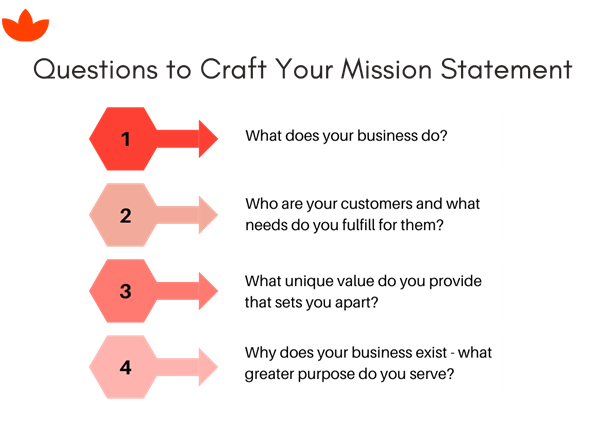

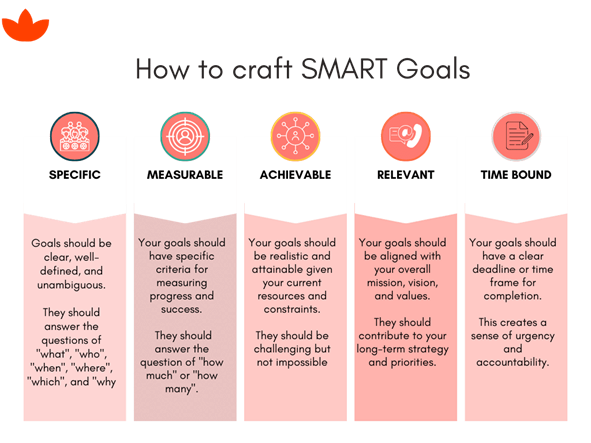

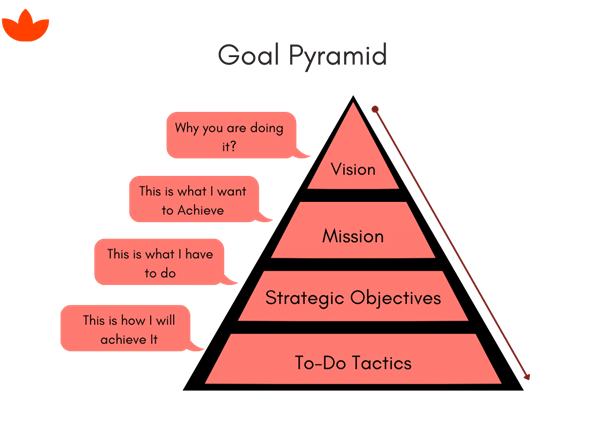

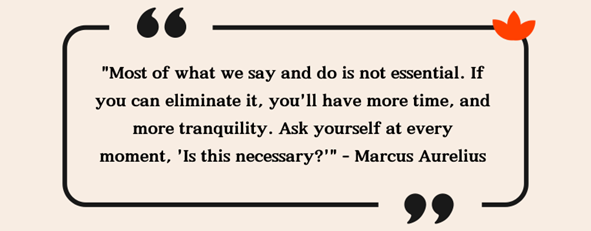
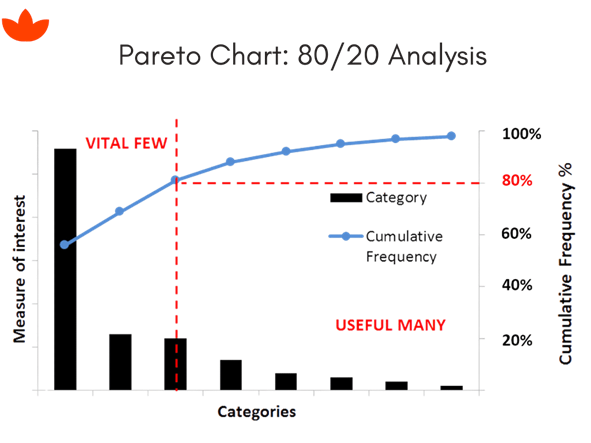





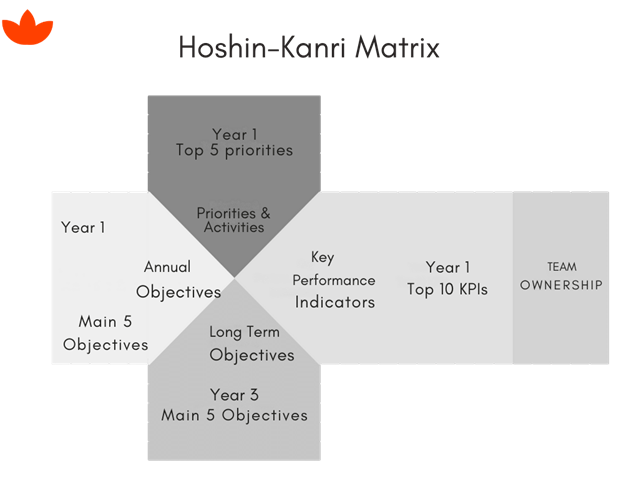

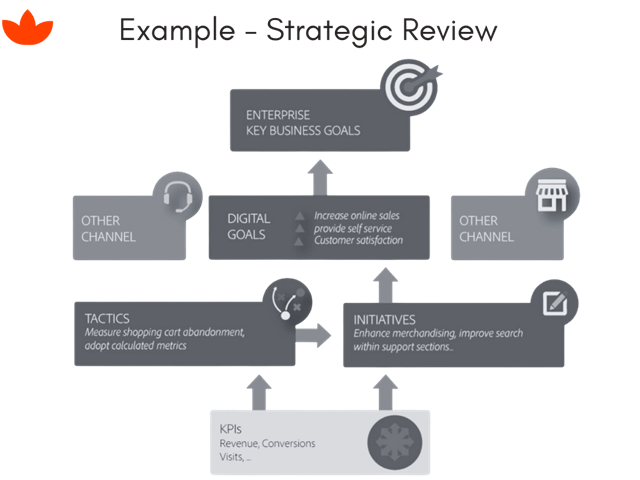


Comments